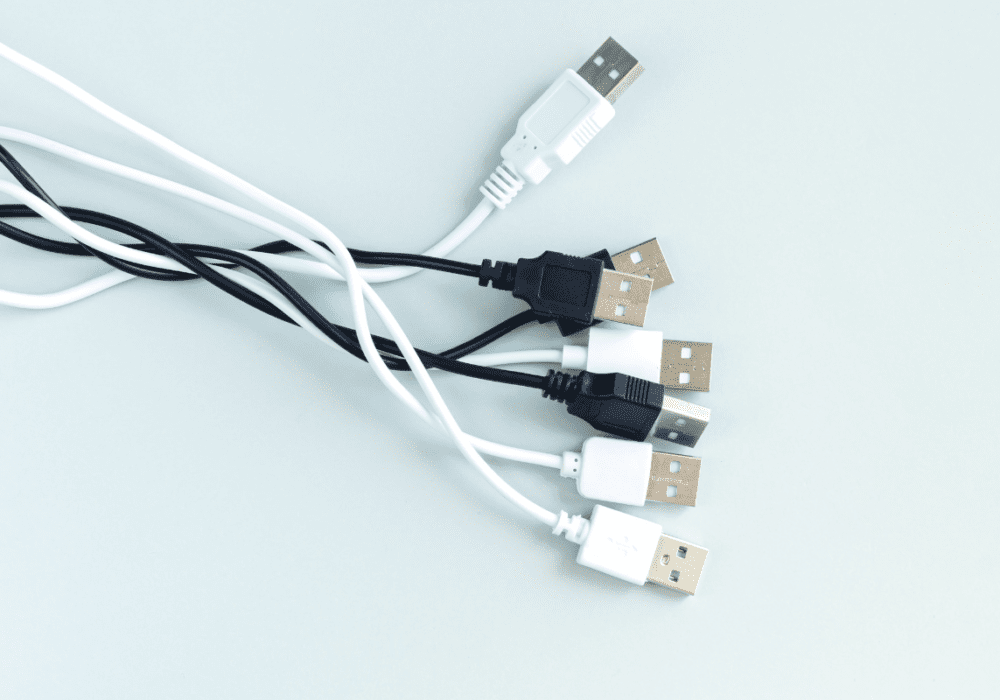
Managing the waste generated by switching to USB-C
The release of the Apple iPhone 15 smartphone heralds something of a new era in consumer electronics. The move by the world’s largest company to standardise device charging to the USB-C standard is a move welcomed by many.
The idea is to standardise USB-C across all mobile devices and avoid the waste caused by obsolete cables and chargers when manufacturers introduce new, non-standard, often proprietary connectors.
This change has been precipitated by the EU. In October last year, the European Commission requested all phones and laptop producers switch to the USB-C connector, which had earlier been agreed on as a common standard.
Apple’s dominant market position could have emboldened it to ignore the request and stop selling in the EU or to produce mobile devices and accessories versioned with USB-C for the European single market only.
Instead, it chose to comply and follow the EU rules everywhere. However, there are good reasons why it may have considered challenging the EU, as the impacts substantially disrupt the mobile device sector.
- Loss of innovation – Apple has contended that standardising on USB-C stifles innovation, such as the previous generation of Apple mobile devices that use the company’s proprietary Lightning connector.
- Loss of revenue – There is a loss of revenue for device manufacturers attached to standardising on USB-C because the need for exclusive OEM proprietary cables and chargers is eliminated.
- 3rd-party aftermarket disruption – An entire ecosystem of accessory sales and manufacturing has been enabled by the mobile device sector, and it has exploited the lack of standardisation as a market opportunity. Migrating to USB-C has disruptive impacts.
Dealing with obsolete mobile device cables and chargers
For the environmental waste management industry, the problem of managing the mass of obsolete chargers and cables is considerable. In 2019, according to a study by the European Commission, phone chargers created about 12,000 tonnes of e-waste in the EU alone — a mass estimated to be the equivalent of filling 75 homes with plugs and cables.
As USB-C steadily replaces alternative charging and data connectivity interfaces across all mobile device manufacturing, this is going to create a consequential stream of electrical waste for a number of years.
A range of initiatives for dealing with the glut of cables and chargers is in place. This includes:
- Apple Store – Apple allow customers to recycle at their stores or via their website but the likelihood that most will go down this route is minimal. One question here is should Apple be more proactive in encouraging customers to recycle via its stores? Financial incentives, such as money off new purchases, often prove motivational.
- Dedicated bins in communities – Waste management bins for small electricals are often to be found at public sites readily accessible to residents, such as supermarket and retail park car parks, as well as in-stores.
- Municipal recycling centres – HWRC’s have specific areas for disposing of small electricals, feeding a workstream where waste management operators hand sort such items at the site.
Despite these opportunities for the responsible disposal of cables and chargers rendered obsolete by the wholesale adoption of USB-C across all mobile devices, there are many people who are likely to just throw unwanted cables and chargers into the bin, potentially sending it to landfill.
While processing line automation may be able to identify many recyclables and remove them from workflows destined for landfill or EfW incineration, it is far better if they enter the system at the most appropriate points, the disposal bins dedicated to small electricals.
Promoting greater environmental responsibility with the resident app
One of the best ways of encouraging residents to be more responsible in their approach to disposing of small electricals, such as obsolete mobile device cables and chargers, is to explicitly communicate how they should treat such items.
Communicating on correctly dealing with waste items can be done by publicising the issue on council and local news websites, as well as through hand delivered printed materials, such as council waste management notices and community press publications.
The Whitespace Resident Mobile App offers a much more direct method of communication, and councils are able to take the practice of communicating with residents to the next level.
The app enables a much more precise approach, allowing residents in specific streets and areas to receive targeted communication. Piped directly to their smartphones and other mobile devices, the locations of specific sites close by for the appropriate disposal of small electricals and waste management in general may be clearly communicated.
More than just telling residents what they need to do, including a little background information about the scale of the problem can be a powerfully persuasive tool. By including an element of education within the communication strategy, the app is a valuable and informative tool.
It helps to promote more environmentally responsible behaviour within communities around waste management, with the potential to use it to help address other community issues, such as anti-social behaviour (ASB) like fly-tipping.
Technology to support better waste management within communities from Whitespace
Whitespace is the UK’s partner of choice for developing technology solutions that address the logistical problems of waste management. To find out more about Whitespace Municipal Waste Management solutions, please get in touch by calling us on +44 (0)1483 231 650 or emailing us at info@whitespacews.com
